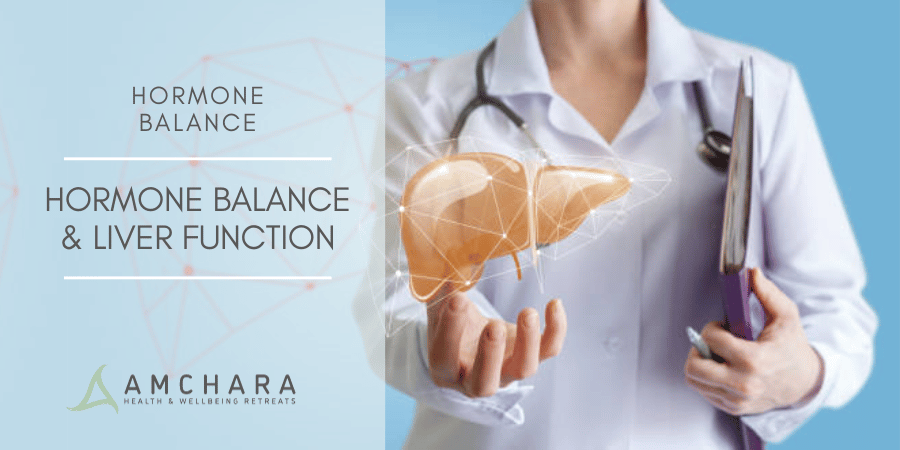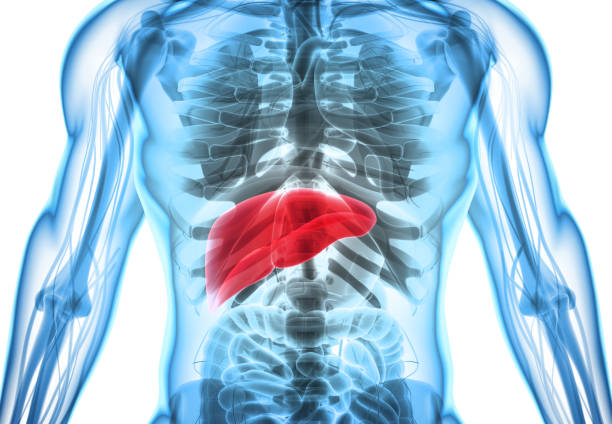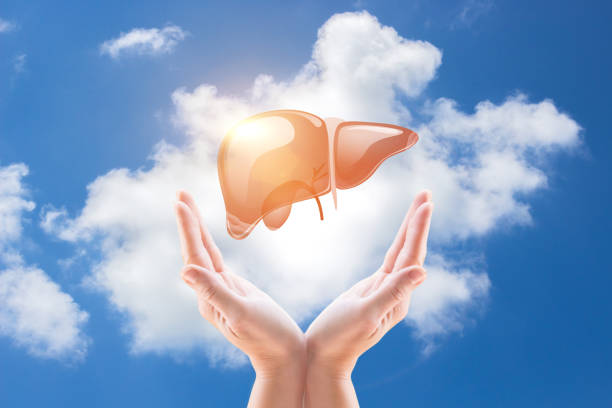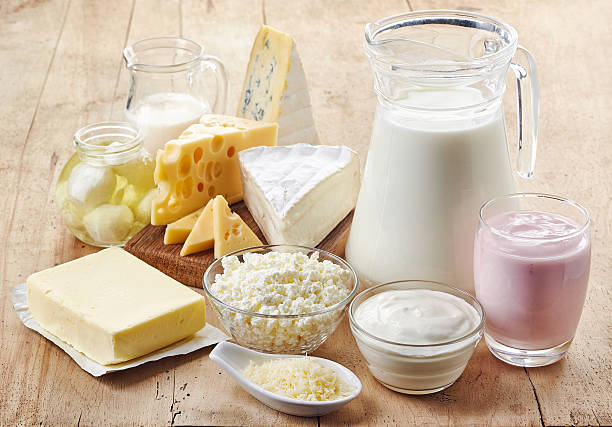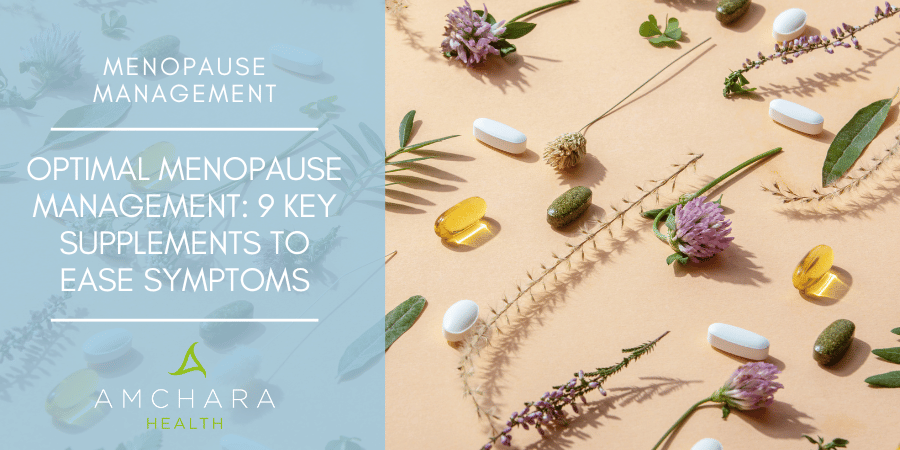Your liver is one of the hardest working organs in your body.
Everything you swallow, breathe in and absorb through your skin passes through your liver.
Without your liver there would be little protection from all the potentially dangerous toxins your body is subjected to on a daily basis.
The liver filters everything you put into your body, separating the nutrients you need for energy and disposing of the many substances your body does not need, such as toxins and metabolic waste.
However, although the liver’s primary function is detoxification, it also plays a key role in processing hormones and removing them from your circulation. Keeping it healthy therefore is critical to your overall wellbeing and normal hormone balance.
Article Index:
- Female hormone metabolism
- Phase I
- Phase II
- How to take good care of your liver
- Maintain a healthy weight
- Balance blood sugar
- Reduce or eliminate dairy foods
- Reduce inflammatory fats
- Reduce liver burden
- Support oestrogen metabolism and excretion
- Look after your gastrointestinal health and gut flora
- Minimise exposure to toxins
- Boost phytoestrogen intake
- Add liver supportive supplements
- Free liver hormone health consultation
What is the liver’s involvement with your hormones?
There is an important relationship between your liver function and your hormones.
Your liver has an essential role to play in your body’s use of hormones, both those that are naturally produced and others introduced via hormone therapies such as HRT.
Whilst the liver itself does not make hormones, it does play a significant role in maintaining hormone balance because it acts as a processor, simultaneously manufacturing, regulating and directing various hormones to carry out their functions around the body.
Crucially, the liver also has to ensure hormones are efficiently metabolised once their work is done.
Some of the liver’s specific functions include:
- Regulating sex hormone levels and eliminating excess hormones
- Producing bile to break down fats and eliminate fat-soluble toxins and excess substances
- Creating specific proteins that act as hormone carriers
- Manufacturing testosterone and the oestrogen hormones
Keeping your hormones in balance relies on having effective systems in place to clean up and excrete old or excessive hormones, which is why your liver is so important.
If your body experiences a hormone excess, either from internally produced hormones or external sources such as HRT, the liver may not be able to process hormones as quickly or efficiently – this can cause hormonal imbalance.
Health problems can occur if toxins or excess hormones are not successfully eliminated and these important processes in the liver can only be maintained with sufficient nutrients.
Female hormone metabolism
One of the key areas of concern for women’s health is the liver’s role in regulating the sex hormones, in particular the oestrogen hormones. The metabolism of oestrogen is generally thought to be more important than the process of progesterone metabolism.
This is partly because progesterone is utilised within the body in several different ways and also because, compared to other hormones, relatively small amounts of oestrogen are required to exert an effect in the body, increasing the need for tight control.
The female body produces three principle types of oestrogen – oestrone, oestradiol and oestriol. Scientists have discovered oestrogens break down into metabolites with varying levels of oestrogenic activity. The stronger the oestrogenic effect, the more likely you are to be at risk of developing oestrogen related cancers.
The liver controls oestrogen levels in two specific ways:
- By producing a substance called sex hormone-binding globulin (SHBG) which helps to regulate levels of free oestrogen.
- By detoxification of oestrogen through specific liver pathways known as Phase 1 and Phase II.
Phase I
This is the liver pathway responsible for breaking down substances, and sending them onto Phase II.
Many substances, including some hormones, are metabolised directly within Phase I, but are often broken down and oxidised, creating a metabolite that is still active and may be considered more toxic. These metabolites are then further metabolised into safer compounds in Phase II.
The Phase I pathway can be affected by several factors including:
- alcohol
- drugs
- lack of nutrients
Other substances, such as grapefruit juice and some prescription drugs, can interfere with enzymes in Phase 1 that may subsequently alter hormone balance.
On a positive note, substances derived from cruciferous vegetables such as broccoli and Brussels sprouts can stimulate enzymes, promoting the metabolism of oestrogen into milder forms and reducing health risks.
Phase II
This pathway builds new substances by adding chemicals and nutrients, such as amino acids, to the toxic chemicals already processed in Phase I, in order to render them harmless.
The liver transforms the toxins into water-soluble substances that can be easily excreted in the urine, bile, perspiration or the breath. Together, these two phases of biochemical transformation are how the liver provides your body with nutrients, and supports the elimination of excess or toxic substances.
The Phase II pathway depends on a large number of nutrients, including enzymes and amino acids, and their availability has a significant influence on the metabolic outcome.
If there is an imbalance in Phase I or Phase II of the liver pathways, oestrogen can be reabsorbed through the digestive system and returned to the liver, adding to the overall oestrogen load on the body, which can result in oestrogen dominance.
Oestrogen is a growth hormone, which in excess can increase the risk of breast cancer. Excessive oestrogen can also contribute to a range of health concerns such as weight gain, irregular or abnormal periods, breast tenderness, mood swings, headaches, recurrent vaginal yeast infections, cold hands and feet, irritability and depression.
How to take good care of your liver
Your liver may be struggling to detoxify because it is overburdened by too many toxic substances. A healthy liver is vital for balanced hormones so it’s important not to overload it.
Follow our guidelines to keep your liver in tip-top condition and your hormones happy!
Top up on liver supportive nutrients to aid detoxification
Eat at least five servings of fresh fruit and vegetables daily. These supply important B vitamins, folic acid and vitamin C, all needed to aid liver function.
Fruits and vegetables are good sources of antioxidants, essential for protecting the liver, so include plenty every day, particularly artichoke, beetroot, broccoli, cabbage, garlic, leeks, onions, parsley and watercress, apples, pears, apricot, berries, grapes, oranges and watermelon.
Choosing organic food will reduce your exposure to pesticides.
Cruciferous vegetables such as broccoli, Brussels sprouts, and cabbage are a great source of indole-3-carbinol (I3C), a phytochemical which actively promotes the breakdown of oestrogen.
Eat good quality lean protein to benefit from essential amino acids, key players in liver health.
Chicken, turkey, eggs, fish, lentils, beans, nuts and seeds are rich sources of methionine, taurine, glutamine, glyceine and cysteine. These amino acids also help to produce glutathione, an extremely important antioxidant, vital for liver function.
Those on low protein diets are at risk of impaired liver detoxification.
Maintain a healthy weight
This is particularly important at different stages of life, notably around the menopause, as the changes in hormones at this time predispose women to gain weight, particularly around the middle.
Being overweight can have a significant impact on the severity and length of menopausal symptoms and on later health.
The accumulation of fat cells around the abdomen is known as central obesity and can lead to insulin resistance, a metabolic condition whereby your body has to release high levels of insulin to clear sugar from your blood.
Excess insulin in the blood stream also triggers the ovaries to release more testosterone and reduces levels of sex hormone-binding globulin (SHBG), contributing to increased levels of oestrogen.
Losing weight helps to lower oestrogen levels and is an important step towards balancing hormone levels.
Balance blood sugar
When blood sugar levels drop, the hormone cortisol is activated to bring about the biochemical reactions needed to restore balance.
Constant dips in blood sugar levels burden the adrenal glands and force progesterone down the cortisol pathway, reducing its availability to counterbalance the effects of oestrogen.
In the long-term, blood sugar imbalances may also promote insulin resistance and storing of fat around the abdomen.
To keep steady blood sugar throughout the day choose:
- Low GI carbohydrates, such as whole grains, beans and pulses.
- Eat a little protein with every meal and snack, in particular beans, pulses and lentils with moderate amounts of organic lean poultry and fish.
- Include regular, small portions of healthy fats such as nuts, seeds, cold pressed oils, avocado, olives and coconut oil.
- Minimise sugar intake, including hidden sugars in processed foods and drinks.
Reduce or eliminate dairy foods
- Dairy products, even organic ones, contain traces of hormones and growth factors.
- In addition to oestrogens, milk is a direct source of the androgen (male) hormones, testosterone and dihydrotestosterone.
- A number of studies have linked milk with some cancers and with hormonal symptoms like acne.
- Ingestion of milk has been shown to produce an exaggerated response to blood sugar and insulin.
Reduce inflammatory fats
- Reducing dietary intake of pro-inflammatory fats in favour of anti-inflammatory fats can aid oestrogen balance.
- This can be achieved by reducing intake of red meats, high fat dairy products and eggs and increasing consumption of oily fish, nuts, seeds and cold pressed omega-rich fats.
Reduce liver burden
- Avoid overeating – many people eat too much, consuming twice as many calories as required to function.
- Eliminate processed foods and those with additives and preservatives.
- Cut out alcohol & caffeine. Caffeine has a number of negatives:
- taxes the liver, stimulates adrenals, upsets blood sugar levels;
- exacerbates symptoms such as anxiety, irritability, mood swings, depression and insomnia and increases fluid retention, which can worsen bloating and breast tenderness.
- Studies show alcohol increases both natural and synthetic oestrogen levels in women, as well as this, alcohol intake is positively associated with premenstrual anxiety and mood changes.
- Alcohol can upset blood sugar levels and burden the liver, worsening hormone and mood imbalances.
Support oestrogen metabolism and excretion
- By increasing fibre intake and encouraging regular bowel movements.
- Excess oestrogen is broken down in the liver and excreted via bile through the stool. Bile binds to dietary fibre (especially lignin found in flax, beans and seeds), helping to carry used oestrogens out of the body. Fibre also encourages the growth of healthy bacteria, which plays an important role in deactivating oestrogen so that it’s not reabsorbed into the circulation.
- A poor diet lacking in fibre, combined with abnormal gut flora, can eventually increase the oestrogen load on your body.
- There are two main types of fibre, soluble and insoluble. Fresh fruits, oats and pulses are a great source of soluble fibre, whereas insoluble fibre is found in whole unrefined grains, bran and vegetables. Good examples are:
– buckwheat
– quinoa
– lentils
– oats
– beans
– barley
– nuts & seeds
– Jerusalem artichoke
– onions
– leeks
– garlic
- Fibre not only eliminates excess hormones, it also aids digestion, helps you to feel full and carries toxins out of your body.
Look after your gastrointestinal health and gut flora
- The cells of your gut are the first site of exposure to xenobiotics and therefore play a central role in the detoxification process. The intestinal cells attempt to reduce the passage of toxic substance to other parts of your body.
- Healthy bacteria in your gut play an important role in protecting the gut lining, as well as helping the liver detoxify by fermenting fibre, producing a substance that increases glutathione production. Glutathione is a powerful antioxidant and essential for maintaining efficient detoxification pathways in the liver.
Minimise exposure to toxins
- Spring clean your diet and give your liver a break by reducing potential toxins. Prime culprits are alcohol, smoking and recreational drugs, as well as environmental toxins like plastics, pesticides, weed-killers, insecticides and household chemicals.
- Change from plastic to glass, ceramic or PET (a form of polyester) containers to store food and water.
- Never heat food in plastic containers.
- Choose eco-friendly detergents and toiletries, with less chemicals.
- Opt for organic food where possible.
- Shop for small fish from clean waters to reduce PCB intake (PCBs are toxic industrial compounds, also known as polychlorinated biphenyls).
- Consider investing in a good quality water filter.
- Avoid beauty products containing parabens.
Boost phytoestrogen intake
Phytoestrogens are plant compounds with the capacity to bind to oestrogen receptors on the cells and appear to have both oestrogenic and anti-oestrogenic effects. These substances therefore have hormone regulating actions in the body.
The two most common categories of phytoestrogen are isoflavones and lignans – both require activation into their biologically active forms by fermentation via healthy bacteria in the intestines. Introduce plant-based phytoestrogen rich foods into your daily eating plan to help balance your hormones, such as fermented soya, tempeh, flaxseeds, legumes, lentils, beans, chickpeas, fenugreek, hops, red clover, sage, alfalfa and dandelion.
Lentils, beans and chickpeas can also stimulate the release of SHGB which is produced in the liver and will bind to sex hormones in the blood, helping to regulate their effect.
Add liver supportive supplements
To function at its best, your liver may need a helping hand with a good supply of Phase 1 and Phase II co-factor nutrients. A good liver support supplement plan should include:
A vitamin B complex – not only do B vitamins protect the liver from the damaging effects of alcohol, they are also vital for the actions of the enzyme systems in Phase 1.
Milk thistle – used for hundreds of years as a liver tonic, milk thistle contains the active component silymarin, which has been shown to prevent liver toxicity and enhance liver function. Silymarin also leads to a significant increase in the levels of glutathione, a major detoxifying compound.
N-acetyl-cysteine – used medically to treat some causes of liver failure, this sulphur-based amino acid helps to replenish glutathione stores, supporting the Phase II pathways to help neutralise free radicals before they can damage the liver.
Alpha-lipoic acid – an antioxidant that has been found to protect the liver from toxic damage. It also possesses detoxifying effects and contains sulphur, which helps to increase glutathione levels. Furthermore, alpha-lipoic acid attracts heavy metals such as lead and mercury, which are then bound and carried safely out of the body.
Antioxidants – a broad range antioxidant formula containing vitamins A, C and E as well as selenium, manganese, zinc, copper, co-enzyme Q10 and reduced glutathione, will help to neutralise the free radicals formed in Phase 1 detoxification as well as provide co-factors for important enzymes in the liver.
If you are interested in finding out about your hormone health, a consultation with an Amchara Personalised Health practitioner could be of benefit.
Catch up with the rest of our ‘hormone’ series:
- About female hormones
- How liver function affects hormone balance
- The truth about belly fat and your hormones
- Blood sugar imbalance and your hormones
- Stress causing havoc with your hormones?
- Give up sugar (to balance your hormones)
- Give up alcohol (to improve your hormonal balance)
- Caffeine and how it affects your hormones
- Dairy – time to give it up for good.
Hormone Related Stories:
- Supplement guide to female hormone health
- Exercise and hormone balance
- 5 alarm bells for poor hormone health
- Restoring hormonal imbalance naturally
Written by: Jacqueline Newson BSc (Hons) Nutritional Therapy
Leave us a comment below and let us know what you think of our ‘hormone’ series.
